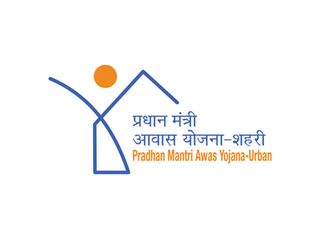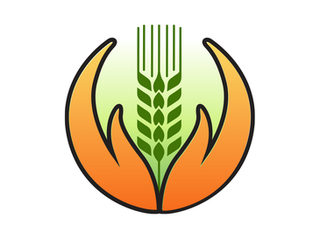Related Research Articles
India has a robust social security legislative framework governing social security, encompassing multiple labour laws and regulations. These laws govern various aspects of social security, particularly focusing on the welfare of the workforce. The primary objective of these measures is to foster sound industrial relations, cultivate a high-quality work environment, ensure legislative compliance, and mitigate risks such as accidents and health concerns. Moreover, social security initiatives aim to safeguard against social risks such as retirement, maternity, healthcare and unemployment while tax-funded social assistance aims to reduce inequalities and poverty. The Directive Principles of State Policy, enshrined in Part IV of the Indian Constitution reflects that India is a welfare state. Food security to all Indians are guaranteed under the National Food Security Act, 2013 where the government provides highly subsidised food grains or a food security allowance to economically vulnerable people. The system has since been universalised with the passing of The Code on Social Security, 2020. These cover most of the Indian population with social protection in various situations in their lives.
The National Pension System (NPS) is a defined-contribution pension system in India regulated by the Pension Fund Regulatory and Development Authority (PFRDA) which is under the jurisdiction of the Ministry of Finance of the Government of India. National Pension System Trust was established by PFRDA as per the provisions of the Indian Trusts Act of 1882 to take care of the assets and funds under this scheme for the best interest of the subscriber.

Agriculture in India is highly susceptible to risks like droughts and floods. It is necessary to protect the farmers from natural calamities and ensure their credit eligibility for the next season. For this purpose, the Government of India introduced many agricultural social insurances throughout the country, the most important one of them being Pradhan Mantri Fasal Bima Yojana.
India operates a complex pension system. There are however three major pillars to the Indian pension system: the solidarity social assistance called the National Social Assistance Programme (NSAP) for the elderly poor, the civil servants pension and the mandatory defined contribution pension programs run by the Employees' Provident Fund Organisation of India for private sector employees and employees of state owned companies, and several voluntary plans.

Pradhan Mantri Jan Dhan Yojana is a financial inclusion program of the Government of India open to Indian citizens, that aims to expand affordable access to financial services such as bank accounts, remittances, credit, insurance and pensions. This financial inclusion campaign was launched by the Prime Minister of India Narendra Modi on 28 August 2014. He had announced this scheme on his first Independence Day speech on 15 August 2014.

The 2015 Union budget of India refers to 2015–2016 Union budget of India. The beginning of the budget printing began on 19 February 2015 with the traditional halwa ceremony. From 20 February until the presentation of budget about 100 government employees remained locked up in the North Block of the Secretariat Building, New Delhi, which houses the budget printing press, to maintain secrecy. The budget was presented on 28 February by Finance Minister Arun Jaitley.
Pradhan Mantri Suraksha Bima Yojana is a government-backed accident insurance scheme in India. It was originally mentioned in the 2015 budget speech by Finance Minister Arun Jaitley in February 2015. It was formally launched by the Prime Minister Narendra Modi on 8 May in Kolkata.
Pradhan Mantri Jeevan Jyoti Bima Yojana is a Government-backed life insurance scheme in India. It was originally mentioned in the year 2015 budget speech by the then-Finance Minister, Arun Jaitley in February 2015. It was formally launched by Prime Minister Narendra Modi on 9 May 2015 in Kolkata. As of May 2015, only 20% of India's population has any kind of insurance, this scheme aims to increase the number.

Atal Pension Yojana, formerly known as Swavalamban Yojana is a government-backed pension scheme in India, primarily targeted at the unorganised sector. It was mentioned in the year 2015 Budget speech by the Finance Minister Arun Jaitley. It was launched by Prime Minister Narendra Modi on 9 May 2015 in Kolkata. Its main objective is to help towards economic security of those people who become depressed after their working age and take retirement from professional life.

Pradhan Mantri Awas Yojana (PMAY) is a credit-linked subsidy scheme by the Government of India to facilitate access to affordable housing for the low and moderate-income residents of the country. It envisaged a target of building 2 crore (20 million) affordable houses by 31 March 2022. It has two components: Pradhan Mantri Awas Yojana(Urban) (PMAY-U) for the urban poor and Pradhan Mantri Awaas Yojana (Gramin) (PMAY-G and also PMAY-R) for the rural poor, the former administered by Ministry of Housing and Urban Affairs and the latter by Ministry of Rural Development. This scheme converges with other schemes to ensure that houses have a toilet, Saubhagya Scheme for universal electricity connection, Ujjwala Yojana LPG connection, access to drinking water and Jan Dhan banking facilities, etc.

Pradhan Mantri Krishi Sinchai Yojana is a national mission to improve farm productivity and ensure better utilization of the resources in the country. The budget of ₹53 billion (US$610 million) in a time span of one year 2015-2016 has been allocated to this scheme. The decision was taken on 1 July 2015 at the meeting of Cabinet Committee on Economic Affairs, approved with an outlay of 50000 crore for period of 5 years.
Unorganised Workers' Identification Number or UWIN is a proposed unique number to be issued as identity proof to unorganised workers in India.

The Pradhan Mantri fasal bima yojana (PMFBY) launched on 18 February 2016 by Prime Minister Narendra Modi is an insurance service for farmers for their yields. It was formulated in line with One Nation–One Scheme theme by replacing earlier two schemes Agricultural insurance in India#National Agriculture Insurance Scheme and Modified National Agricultural Insurance Scheme by incorporating their best features and removing their inherent drawbacks (shortcomings). It aims to reduce the premium burden on farmers and ensure early settlement of crop assurance claim for the full insured sum.
Give Up LPG Subsidy is a campaign that was launched in March 2015 by the Indian government led by Prime Minister Narendra Modi. It is aimed at motivating LPG users who are able to afford to pay the market price for LPG to voluntarily surrender their LPG subsidy. As of 23 April 2016, 10 million people had voluntarily given up the subsidy. The surrendered subsidy is being redistributed by the government in order to provide cooking gas connections to poor families in rural households free of cost. Maharashtra, Uttar Pradesh, Karnataka, Delhi and Tamil Nadu are the top five states to give up the subsidy.
Pradhan Mantri Kisan Samman Nidhi is an initiative by the government of India that give farmers up to ₹6,000 (US$69) per year as minimum income support. The initiative was announced by Piyush Goyal during the 2019 Interim Union Budget of India on 1 February 2019. The scheme has cost ₹75,000 crore per annum and came into effect December 2018.
The 2019 Interim Union Budget of India was presented by acting Finance Minister Piyush Goyal on 1 February 2019. The government introduced Pradhan Mantri Kisan Samman Nidhi and Pradhan Mantri Shram Yogi Mandhan.
Atal Bhujal Yojana is a groundwater management scheme launched by Prime Minister Narendra Modi on the 95th birth anniversary of former Prime Minister Atal Bihari Vajpayee, on 25 December 2019. The purpose of the scheme is to improve groundwater management in seven states of India.

The Pradhan Mantri Matsya Sampada Yojana (PMMSY)(http://pmmsy.dof.gov.in/) is an initiative launched by the Government of India to establish a comprehensive framework and reduce infrastructural gaps in the fisheries sector. The scheme was announced by the Finance Minister, Nirmala Sitharaman during her speech in the parliament of India while presenting the Union budget for 2019–20 on 5 July 2019. The government intends to place India in the first place in Fish production and processing by implementing Neeli Kranti (transl. Blue Revolution). This scheme is in line with governments aim to double the farmers' income by 2022–23.
Pradhan Mantri Garib Kalyan Anna Yojana is a food security welfare scheme announced by the Government of India on March 26 2020, during the COVID-19 pandemic in India. The program is operated by the Department of Food and Public Distribution under the Ministry of Consumer Affairs, Food and Public Distribution. But the nodal ministry is Ministry of Finance.The scale of this welfare scheme makes it the largest food security program in the world benefiting 81.35 crore in India.
The Department of Agriculture and Farmers' Welfare (DA&FW) is one of the three constituent department of Ministry of Agriculture and Farmers' Welfare, the other two being Department of Agriculture Research and Education (DARE) and Department of Animal Husbandry and Dairying. The Department is headed by Minister of Agriculture and Farmers' Welfare.
References
- ↑ Pradhan Mantri Shram Yogi Maandhan
- ↑ "Scheme Extends Support to India's 42 Crore Unorganized Sector Workers". Prabhat Khabar. 8 June 2020. Retrieved 3 April 2024.
- ↑ "Budget 2019 highlights: Standard deduction to be raised, no tax on second house", Live Mint, 1 February 2019
- ↑ "Good News! Unorganised workers can now subscribe to this pension scheme", Financial Express , 17 February 2019